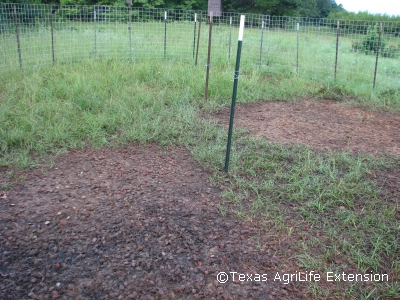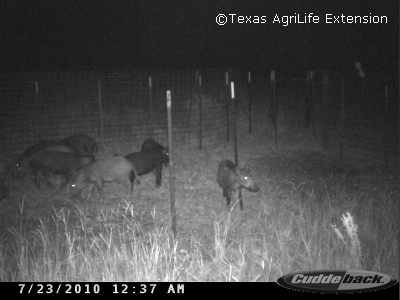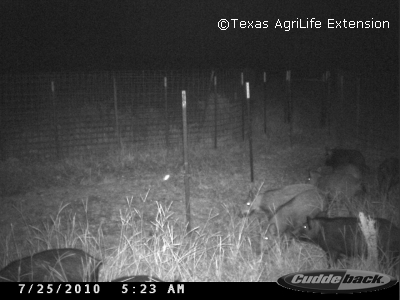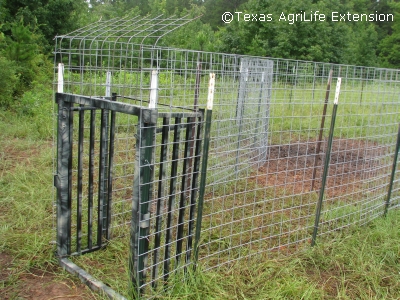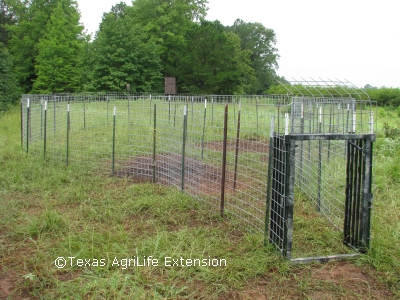“The Beginning of the End”
Images collected from our remote cameras from July 22-27 indicated that the hogs were finally venturing, as a group of about 8 to 10, deeper and deeper into the trap. There were still several smaller “satellite groups” that continued to make up the late shift arriving at the peach buffet. From the very beginning of pre-baiting, it was clear that trapping would have to occur over time since these various groups were sharing in the buffet but each group held reservations at different times. Ahh…, the beauty of using cameras versus simply observing consumption of the bait on a daily basis.
By July 27, the cameras captured enough traffic into the trap to warrant attaching the panels to the gate to force all hog traffic through that opening. The gate doors remain wired open while more emphasis was placed on baiting toward the back of the trap rather than the practice of baiting mostly outside and just inside the gate opening when the pre-baiting process first began. Note that a small piece of panel was placed over the gate to increase its height to 5 feet, and then bent inward to prevent hogs from piling up and going over the top of the trap neck adjacent to the gate.
In the wee morning hours of July 28, 6 hogs were photographed in the back of the trap after passing through the gate. This marks the beginning of the end….at least for the first group of hogs. If hog traffic continues at its present rate as evidenced by 1) consumption of all bait placed at the back of the trap and 2) the photographic evidence of same, we could be within a day or so of setting the gate to capture the first wave of hogs–in what should be a series of successful trapping events over the coming weeks!
